by James Gregory
The relocations of African Americans have been among the most consequential migrations in American history. Historians refer to one sequence as the Great Migration, referring to the exodus of more than seven million people from the South to states in the North and West in the decades between 1900 and 1970. But Black mobility began in the 19th century and continues into the 21st. Here are interactive graphics and maps that allow us to track the changing population of each state decade-by-decade since 1850. Select a state and see where Black residents were born, both other countries and other states. The first tab is a chart. Tabs two three are maps. The fourth tab reverses the terms. Select a birth state and see how many stayed, how many left, and where they settled.
This visualization tool is hosted by Tableau Public and may take a few seconds to respond. If slow, refresh the page.
Move between four visualizations with tabs below
Note on data issues: Birth state information is missing for about 5% of US-born persons in 1970 and about 2% in 1960. These birthplaces are labeled "United States, ns" in the charts. Birthplaces were not recorded for enslaved persons in the 1850 and 1860 censuses, so it is not until 1870 that reliable data on African Americans became available. Native Americans were not routinely included in decennial censuses until 1900.
Source: U.S. Census data from the Minnesota Population Center's IPUMS USA: Steven Ruggles, Katie Genadek, Ronald Goeken, Josiah Grover, and Matthew Sobek. Integrated Public Use Microdata Series: Version 6.0 [Machine-readable database]. Minneapolis: University of Minnesota, 2015, the following samples: 1850 1%, 1860 1%, 1870 1%, 1880 1% 1900 1%, 1910 1%, 1920 1%, 1930 1%, 1940 1%, 1950 1%, 1960 5%, 1970 1% State FM1, 1980 5% State, 1990 5% State, 2000 1%, 2010 ACS 1%, 2022 ACS 1%.
Maps and calculations: James Gregory.
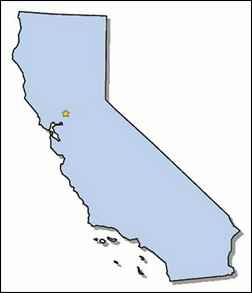 California's history is keyed to migration. The most populous state in the union became so because so many people from other states and other lands have moved there. It was not until 2010 that the number of native-born Californians surpassed the number who had migrated from somewhere else. And still today most adults are from another state or another country. Migration predated the period of US control notably when Spain sent soldiers and missionaries into the area they named California. It accelerated after the United States seized the Mexican province and immediately profited from the 1848 discovery of gold in the Sierra foothills. [more]
California's history is keyed to migration. The most populous state in the union became so because so many people from other states and other lands have moved there. It was not until 2010 that the number of native-born Californians surpassed the number who had migrated from somewhere else. And still today most adults are from another state or another country. Migration predated the period of US control notably when Spain sent soldiers and missionaries into the area they named California. It accelerated after the United States seized the Mexican province and immediately profited from the 1848 discovery of gold in the Sierra foothills. [more]
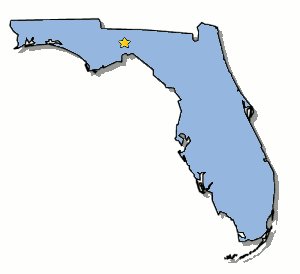 More than any other southern state, Florida has consistantly attracted newcomers. Today only about one third of the population claims a Florida birthplace; two thirds are from somewhere else, many from Cuba and Latin America but really from every state and most nations. Migration to Florida is an old story, In the late 1800s, Florida grew rapidly as whites from neighborhing states moved south looking for land to farm. [more]
More than any other southern state, Florida has consistantly attracted newcomers. Today only about one third of the population claims a Florida birthplace; two thirds are from somewhere else, many from Cuba and Latin America but really from every state and most nations. Migration to Florida is an old story, In the late 1800s, Florida grew rapidly as whites from neighborhing states moved south looking for land to farm. [more]
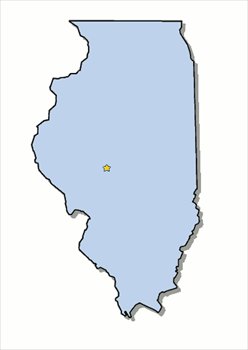 Illinois, like other midwestern states, experienced rapid population growth through migration in the 19th century and much slower growth since then. Recording a population of 851,000 in 1850, the state doubled its numbers by 1860, doubled again by 1880, and again before 1910. It has taken a century to double the 1910 total. Migration in the 19th century drew heavily on states to the east of Illinois, especially New York, Ohio, and Pennsylvania. European immigrants from Gemany and Ireland came in huge numbers in the same period. The 1880 census showed that roughly half the population were from out of state with Germany, New York, Ohio, and Ireland the leading contributors. [more]
Illinois, like other midwestern states, experienced rapid population growth through migration in the 19th century and much slower growth since then. Recording a population of 851,000 in 1850, the state doubled its numbers by 1860, doubled again by 1880, and again before 1910. It has taken a century to double the 1910 total. Migration in the 19th century drew heavily on states to the east of Illinois, especially New York, Ohio, and Pennsylvania. European immigrants from Gemany and Ireland came in huge numbers in the same period. The 1880 census showed that roughly half the population were from out of state with Germany, New York, Ohio, and Ireland the leading contributors. [more]
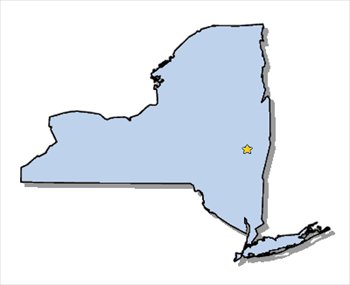 New York has always been the gateway state, the state that absorbs the greatest diversity of newcomers from abroad. In 1850 when for the first time the US census recorded birthplaces, the leading birthplaces for residents not born in New York were in order: Ireland, Germany, England, Connecticut, Massachusetts, Vermont, New Jersey, and Canada, with a dozen other countries further down the list. [more]
New York has always been the gateway state, the state that absorbs the greatest diversity of newcomers from abroad. In 1850 when for the first time the US census recorded birthplaces, the leading birthplaces for residents not born in New York were in order: Ireland, Germany, England, Connecticut, Massachusetts, Vermont, New Jersey, and Canada, with a dozen other countries further down the list. [more]
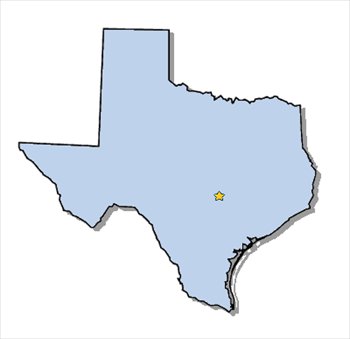 Texas has been a migration magnet throughout its history, which helps explain the record of growth that now makes it the second most populous state following California. Migration, most of it illegal, from Tennessee, Alabama, and Mississippi fueled the rebellion that wrestled the province from Mexico in 1836. In the decades that followed an enormous number of southerners moved west to expand the cotton belt, many of them enslaved. [more]
Texas has been a migration magnet throughout its history, which helps explain the record of growth that now makes it the second most populous state following California. Migration, most of it illegal, from Tennessee, Alabama, and Mississippi fueled the rebellion that wrestled the province from Mexico in 1836. In the decades that followed an enormous number of southerners moved west to expand the cotton belt, many of them enslaved. [more]
 Washington remains today a state where most residents came from somewhere else, another state or another country. Occupied by Americans since the 1840s, it's population grew slowly until statehood in 1889, then surged after the discovery of gold in Alaska and the Yukon in 1896. Farming, timber, and fishing attracted newcomers from the upper Midwest and from northern Europe, along with smaller numbers of Chinese and Japanese. [more]
Washington remains today a state where most residents came from somewhere else, another state or another country. Occupied by Americans since the 1840s, it's population grew slowly until statehood in 1889, then surged after the discovery of gold in Alaska and the Yukon in 1896. Farming, timber, and fishing attracted newcomers from the upper Midwest and from northern Europe, along with smaller numbers of Chinese and Japanese. [more]
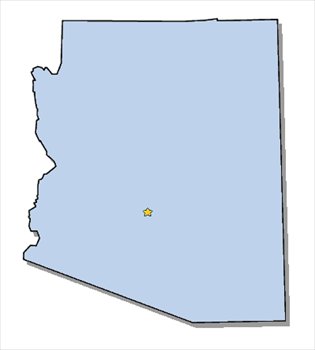 Arizona remains today a state where most residents came from somewhere else, either another state or another country. It is also a state where substantial tracks of land remain the property of Native nations--Navaho, Yuma, Pima, Apache, Pueblo, Papago, and Zuni. The United States seized the area in the war against Mexico in 1846, but few Americans found reason to settle there until silver and cooper deposits brought miners starting in the late 1870s. An 1870 population of less than 10,000 grew to 122,000 by 1900. Whites comprised less than half of the turn-of-the-century population. One third were ethnic Mexicans, born either in the Southwest or Mexico. Native peoples accounted for more than 20 percent of persons enumerated in the 1900 census. [more]
Arizona remains today a state where most residents came from somewhere else, either another state or another country. It is also a state where substantial tracks of land remain the property of Native nations--Navaho, Yuma, Pima, Apache, Pueblo, Papago, and Zuni. The United States seized the area in the war against Mexico in 1846, but few Americans found reason to settle there until silver and cooper deposits brought miners starting in the late 1870s. An 1870 population of less than 10,000 grew to 122,000 by 1900. Whites comprised less than half of the turn-of-the-century population. One third were ethnic Mexicans, born either in the Southwest or Mexico. Native peoples accounted for more than 20 percent of persons enumerated in the 1900 census. [more]
 Colorado remains today a state where most residents came from somewhere else, either another state or another country. Cheyenne, Shoshone, Arapahoe, Ute, and other native nations commanded the area until 1848 when the United States seized it in its war against Mexico. The discovery of gold near Pike's Peak in 1857 set up the first significant influx of newcomers, mostly whites from Midwestern and Northeastern states. [more]
Colorado remains today a state where most residents came from somewhere else, either another state or another country. Cheyenne, Shoshone, Arapahoe, Ute, and other native nations commanded the area until 1848 when the United States seized it in its war against Mexico. The discovery of gold near Pike's Peak in 1857 set up the first significant influx of newcomers, mostly whites from Midwestern and Northeastern states. [more]
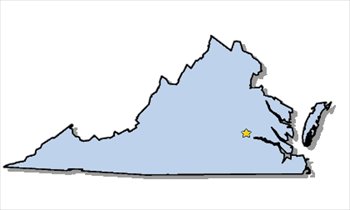 Until World War II, Virginia shared the demographic and migration patterns common to Southeastern states. The state attracted few newcomers aside from those moving short distances across the borders of continguous states. Natural increase among African American and white Virginians drove population gains while outmigration exceeded all avenues of inmigration.
World War II brought military installations and defense industries that began to reshape the economy,[more]
Until World War II, Virginia shared the demographic and migration patterns common to Southeastern states. The state attracted few newcomers aside from those moving short distances across the borders of continguous states. Natural increase among African American and white Virginians drove population gains while outmigration exceeded all avenues of inmigration.
World War II brought military installations and defense industries that began to reshape the economy,[more]
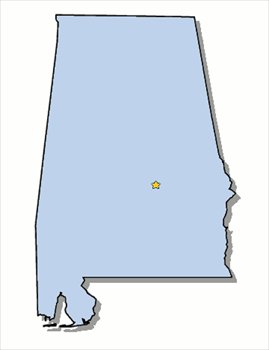 Alabama was a population replacement zone in the early 19th century as Choctaw, Creek, Chickisaw, and Cherokee people were driven west and their lands were sold off to White planters from Georgia, South and North Carolinia, Tennessee, and Virgina bent on expanding the cotton kingdom. Enslaved people of African descent did the work and comprised 45 percent of Alabama's population on the eve of the Civil War. Freedom turned Alabama in a different direction. For the next century, until 1960s, few people moved into the state and population grew slowly, largely dependent upon "natural increase," an odd euphemism for the work of mothers. [more]
Alabama was a population replacement zone in the early 19th century as Choctaw, Creek, Chickisaw, and Cherokee people were driven west and their lands were sold off to White planters from Georgia, South and North Carolinia, Tennessee, and Virgina bent on expanding the cotton kingdom. Enslaved people of African descent did the work and comprised 45 percent of Alabama's population on the eve of the Civil War. Freedom turned Alabama in a different direction. For the next century, until 1960s, few people moved into the state and population grew slowly, largely dependent upon "natural increase," an odd euphemism for the work of mothers. [more]

 California's history is keyed to migration. The most populous state in the union became so because so many people from other states and other lands have moved there. It was not until 2010 that the number of native-born Californians surpassed the number who had migrated from somewhere else. And still today most adults are from another state or another country. Migration predated the period of US control notably when Spain sent soldiers and missionaries into the area they named California. It accelerated after the United States seized the Mexican province and immediately profited from the 1848 discovery of gold in the Sierra foothills.
California's history is keyed to migration. The most populous state in the union became so because so many people from other states and other lands have moved there. It was not until 2010 that the number of native-born Californians surpassed the number who had migrated from somewhere else. And still today most adults are from another state or another country. Migration predated the period of US control notably when Spain sent soldiers and missionaries into the area they named California. It accelerated after the United States seized the Mexican province and immediately profited from the 1848 discovery of gold in the Sierra foothills.  More than any other southern state, Florida has consistantly attracted newcomers. Today only about one third of the population claims a Florida birthplace; two thirds are from somewhere else, many from Cuba and Latin America but really from every state and most nations. Migration to Florida is an old story, In the late 1800s, Florida grew rapidly as whites from neighborhing states moved south looking for land to farm.
More than any other southern state, Florida has consistantly attracted newcomers. Today only about one third of the population claims a Florida birthplace; two thirds are from somewhere else, many from Cuba and Latin America but really from every state and most nations. Migration to Florida is an old story, In the late 1800s, Florida grew rapidly as whites from neighborhing states moved south looking for land to farm.  Illinois, like other midwestern states, experienced rapid population growth through migration in the 19th century and much slower growth since then. Recording a population of 851,000 in 1850, the state doubled its numbers by 1860, doubled again by 1880, and again before 1910. It has taken a century to double the 1910 total. Migration in the 19th century drew heavily on states to the east of Illinois, especially New York, Ohio, and Pennsylvania. European immigrants from Gemany and Ireland came in huge numbers in the same period. The 1880 census showed that roughly half the population were from out of state with Germany, New York, Ohio, and Ireland the leading contributors.
Illinois, like other midwestern states, experienced rapid population growth through migration in the 19th century and much slower growth since then. Recording a population of 851,000 in 1850, the state doubled its numbers by 1860, doubled again by 1880, and again before 1910. It has taken a century to double the 1910 total. Migration in the 19th century drew heavily on states to the east of Illinois, especially New York, Ohio, and Pennsylvania. European immigrants from Gemany and Ireland came in huge numbers in the same period. The 1880 census showed that roughly half the population were from out of state with Germany, New York, Ohio, and Ireland the leading contributors.  New York has always been the gateway state, the state that absorbs the greatest diversity of newcomers from abroad. In 1850 when for the first time the US census recorded birthplaces, the leading birthplaces for residents not born in New York were in order: Ireland, Germany, England, Connecticut, Massachusetts, Vermont, New Jersey, and Canada, with a dozen other countries further down the list.
New York has always been the gateway state, the state that absorbs the greatest diversity of newcomers from abroad. In 1850 when for the first time the US census recorded birthplaces, the leading birthplaces for residents not born in New York were in order: Ireland, Germany, England, Connecticut, Massachusetts, Vermont, New Jersey, and Canada, with a dozen other countries further down the list.  Texas has been a migration magnet throughout its history, which helps explain the record of growth that now makes it the second most populous state following California. Migration, most of it illegal, from Tennessee, Alabama, and Mississippi fueled the rebellion that wrestled the province from Mexico in 1836. In the decades that followed an enormous number of southerners moved west to expand the cotton belt, many of them enslaved.
Texas has been a migration magnet throughout its history, which helps explain the record of growth that now makes it the second most populous state following California. Migration, most of it illegal, from Tennessee, Alabama, and Mississippi fueled the rebellion that wrestled the province from Mexico in 1836. In the decades that followed an enormous number of southerners moved west to expand the cotton belt, many of them enslaved.  Washington remains today a state where most residents came from somewhere else, another state or another country. Occupied by Americans since the 1840s, it's population grew slowly until statehood in 1889, then surged after the discovery of gold in Alaska and the Yukon in 1896. Farming, timber, and fishing attracted newcomers from the upper Midwest and from northern Europe, along with smaller numbers of Chinese and Japanese.
Washington remains today a state where most residents came from somewhere else, another state or another country. Occupied by Americans since the 1840s, it's population grew slowly until statehood in 1889, then surged after the discovery of gold in Alaska and the Yukon in 1896. Farming, timber, and fishing attracted newcomers from the upper Midwest and from northern Europe, along with smaller numbers of Chinese and Japanese.  Arizona remains today a state where most residents came from somewhere else, either another state or another country. It is also a state where substantial tracks of land remain the property of Native nations--Navaho, Yuma, Pima, Apache, Pueblo, Papago, and Zuni. The United States seized the area in the war against Mexico in 1846, but few Americans found reason to settle there until silver and cooper deposits brought miners starting in the late 1870s. An 1870 population of less than 10,000 grew to 122,000 by 1900. Whites comprised less than half of the turn-of-the-century population. One third were ethnic Mexicans, born either in the Southwest or Mexico. Native peoples accounted for more than 20 percent of persons enumerated in the 1900 census.
Arizona remains today a state where most residents came from somewhere else, either another state or another country. It is also a state where substantial tracks of land remain the property of Native nations--Navaho, Yuma, Pima, Apache, Pueblo, Papago, and Zuni. The United States seized the area in the war against Mexico in 1846, but few Americans found reason to settle there until silver and cooper deposits brought miners starting in the late 1870s. An 1870 population of less than 10,000 grew to 122,000 by 1900. Whites comprised less than half of the turn-of-the-century population. One third were ethnic Mexicans, born either in the Southwest or Mexico. Native peoples accounted for more than 20 percent of persons enumerated in the 1900 census.  Colorado remains today a state where most residents came from somewhere else, either another state or another country. Cheyenne, Shoshone, Arapahoe, Ute, and other native nations commanded the area until 1848 when the United States seized it in its war against Mexico. The discovery of gold near Pike's Peak in 1857 set up the first significant influx of newcomers, mostly whites from Midwestern and Northeastern states.
Colorado remains today a state where most residents came from somewhere else, either another state or another country. Cheyenne, Shoshone, Arapahoe, Ute, and other native nations commanded the area until 1848 when the United States seized it in its war against Mexico. The discovery of gold near Pike's Peak in 1857 set up the first significant influx of newcomers, mostly whites from Midwestern and Northeastern states.  Until World War II, Virginia shared the demographic and migration patterns common to Southeastern states. The state attracted few newcomers aside from those moving short distances across the borders of continguous states. Natural increase among African American and white Virginians drove population gains while outmigration exceeded all avenues of inmigration.
World War II brought military installations and defense industries that began to reshape the economy,
Until World War II, Virginia shared the demographic and migration patterns common to Southeastern states. The state attracted few newcomers aside from those moving short distances across the borders of continguous states. Natural increase among African American and white Virginians drove population gains while outmigration exceeded all avenues of inmigration.
World War II brought military installations and defense industries that began to reshape the economy, Alabama was a population replacement zone in the early 19th century as Choctaw, Creek, Chickisaw, and Cherokee people were driven west and their lands were sold off to White planters from Georgia, South and North Carolinia, Tennessee, and Virgina bent on expanding the cotton kingdom. Enslaved people of African descent did the work and comprised 45 percent of Alabama's population on the eve of the Civil War. Freedom turned Alabama in a different direction. For the next century, until 1960s, few people moved into the state and population grew slowly, largely dependent upon "natural increase," an odd euphemism for the work of mothers.
Alabama was a population replacement zone in the early 19th century as Choctaw, Creek, Chickisaw, and Cherokee people were driven west and their lands were sold off to White planters from Georgia, South and North Carolinia, Tennessee, and Virgina bent on expanding the cotton kingdom. Enslaved people of African descent did the work and comprised 45 percent of Alabama's population on the eve of the Civil War. Freedom turned Alabama in a different direction. For the next century, until 1960s, few people moved into the state and population grew slowly, largely dependent upon "natural increase," an odd euphemism for the work of mothers.